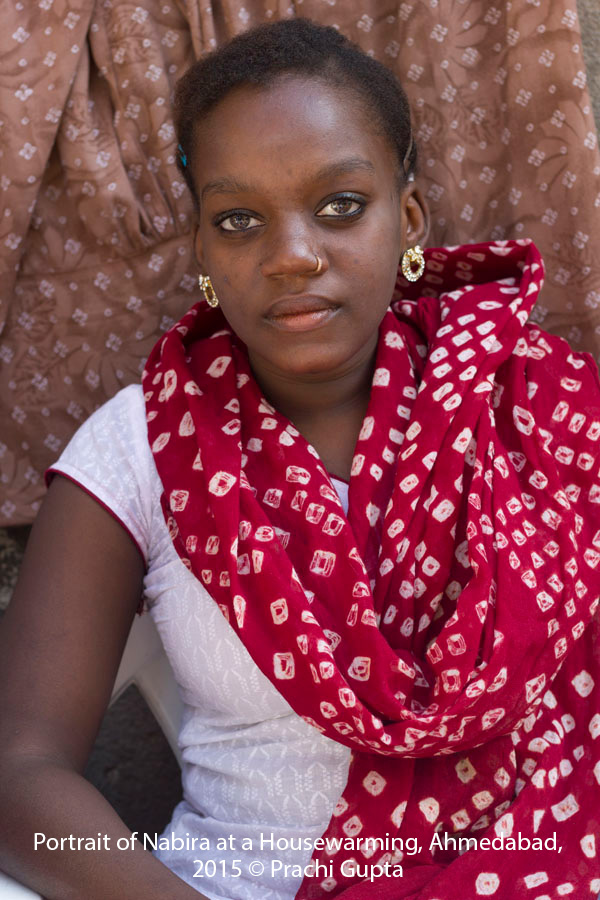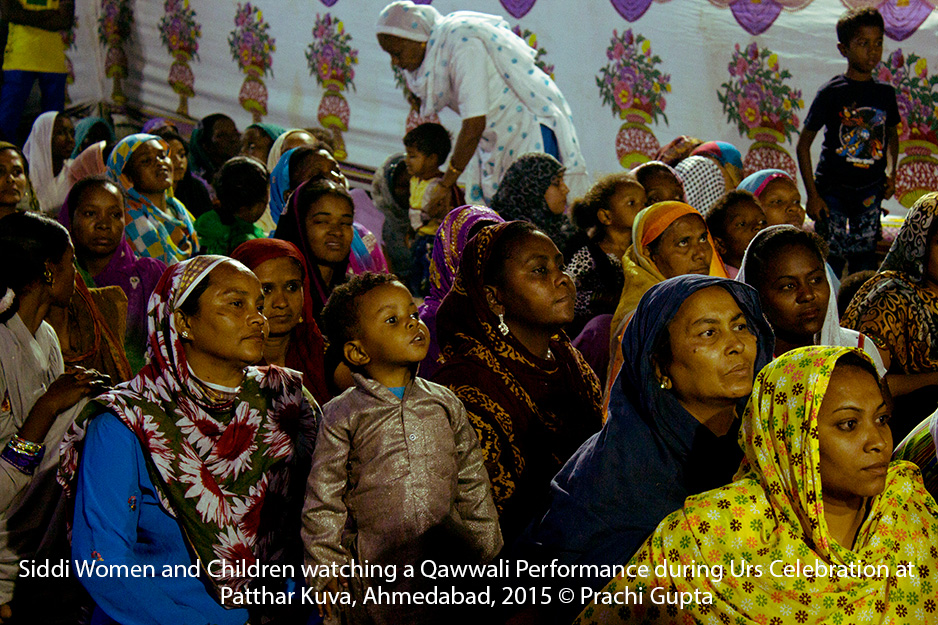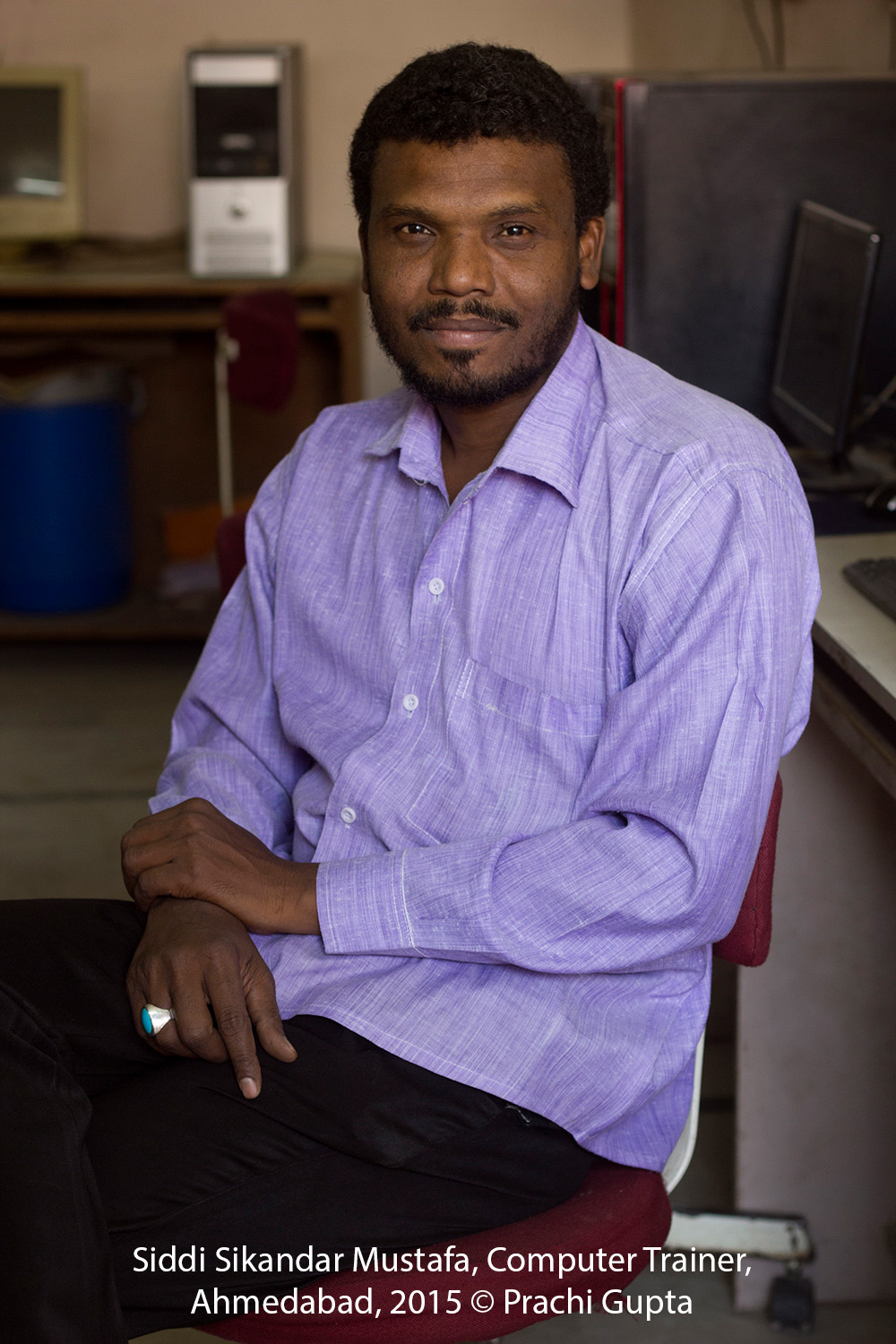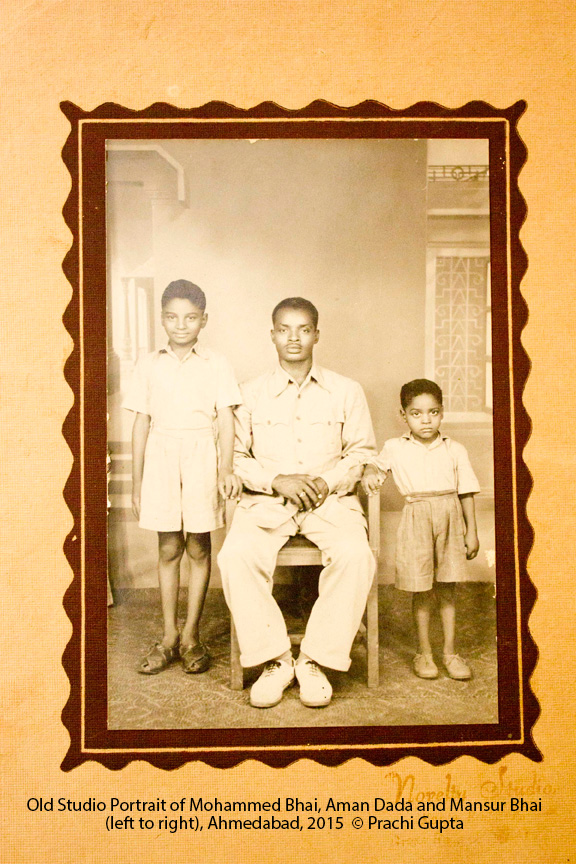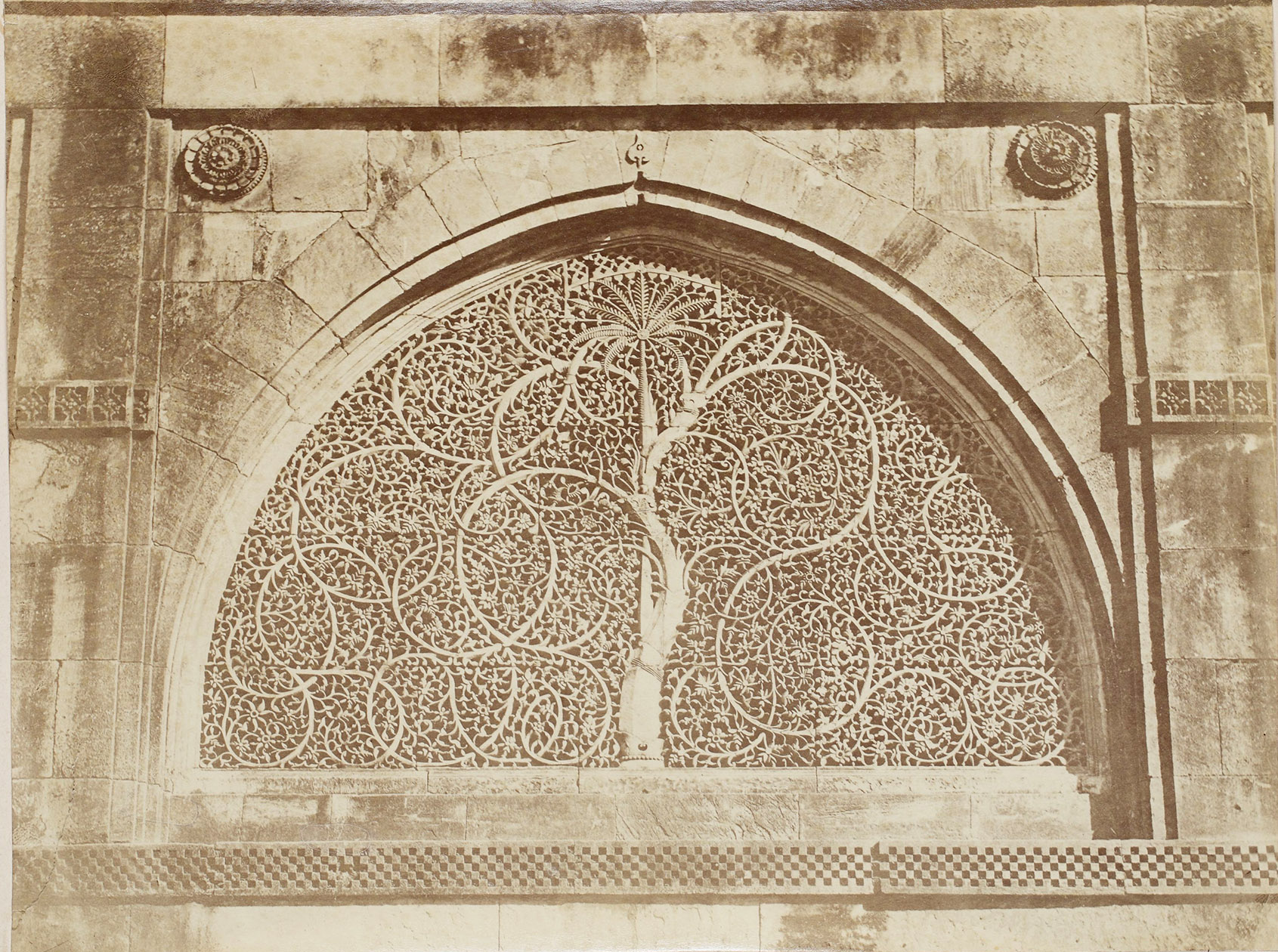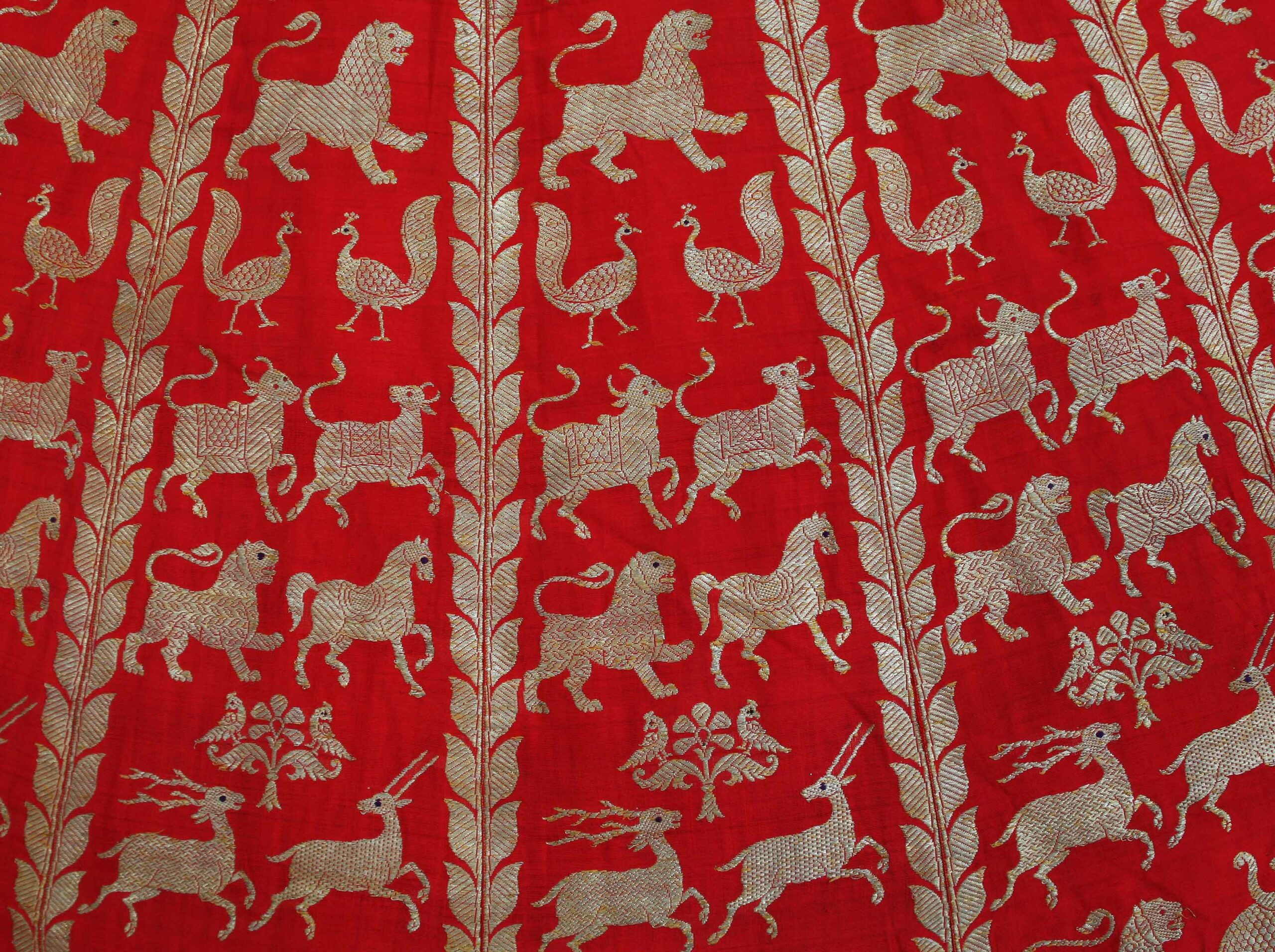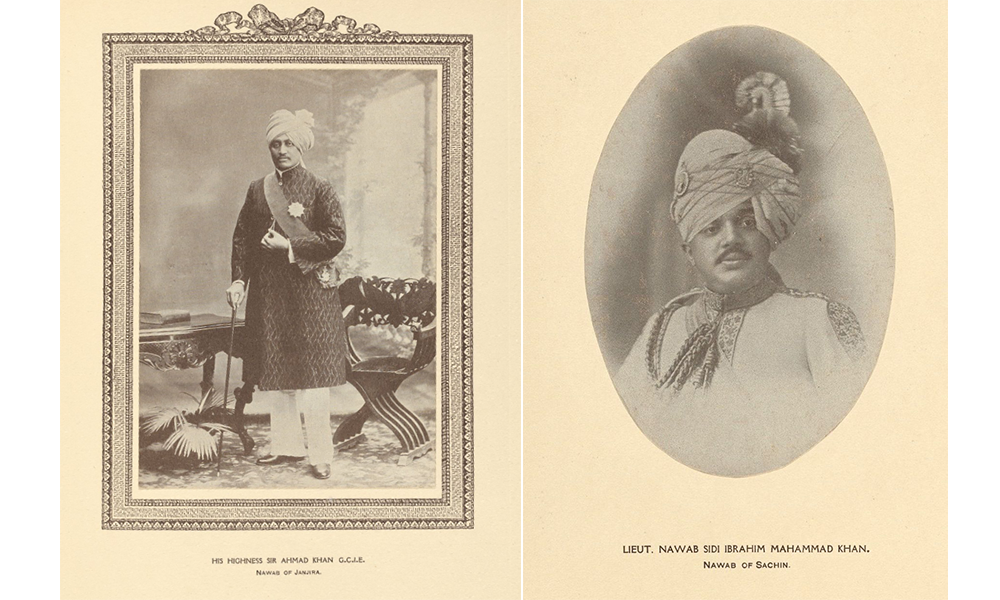
(left) Sir Ahmad Khan, Nawab of Janjira, and Lieutenant Nawab Sidi Ibrahim Mahammad Khan, Nawab of Sachin. Both were rulers of princely states in British India—Janjira in present-day Maharashtra and Sachin in present-day Gujarat—and belonged to Siddi dynasties. Images © Sarmaya Arts Foundation
Throughout its history, the Deccan has boasted a multicultural society where any migrant could dream of attaining power—or at least, a better life. Persians, Central Asians, Africans, Dutch, French, British and Portuguese who arrived on the western coasts of India often became settlers, invested in making conquests and establishing generations. Unique among these communities were the East Africans, who arrived as slaves, rose to the rank of nobility in the courts of the Deccan Sultanates, and in some extraordinary instances, asserted themselves as rulers.
These are images from photographer Prachi Gupta's 2015 series, The Siddi Badhshahs of Ahmedabad. Gupta is a Senior Archivist at the Museum of Art & Photography (MAP), Bangalore. She has a Masters in Photography Design from the National Institute of Design, Gandhinagar and her artistic interest lies in history, archives and performance, which she continues to explore through her work.
Who are the Siddis?
Before they were bought as slaves by the Omani Arabs in the 10th century and transported to the north-western and the west coast of India, many East Africans traveled voluntarily to the Subcontinent working as merchants, traders, performers, midwives etc. According to Professor Beherouz Shroff from the University of California, Department of Asian American Studies, there is no clear timeline tracing when people from Africa began arriving in the Subcontinent. However, she believes the Siddi community of contemporary India can trace its origins to the capture of slave ships from the east African coast and Ethiopia by colonial powers like the Portuguese and the British. A 2011 study aimed at identifying the genetic ancestry of the Indian Siddis revealed that the community is descended from Bantu-speaking farmer communities of Sub-Saharan Africa. This corroborates the theory of their arrival through Arab and Portuguese trade from the east coast of Africa between 15th and 17th centuries.
What does ‘Siddi’ mean?
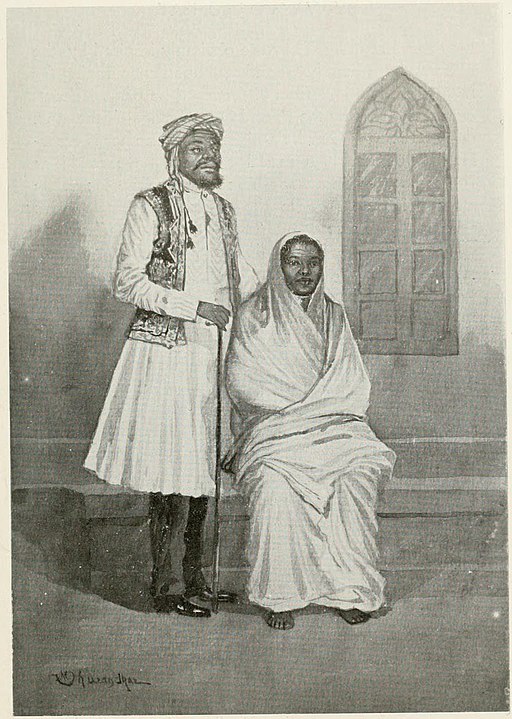
‘Sidis of Bombay’, illustration by MV Dhurandhar from the book ‘By The Ways of Bombay’, 1912, Public domain, via Wikimedia Commons
Many medieval historians disagree. They believe the Siddi community, which lives in present-day Gujarat, Maharashtra, Andhra Pradesh and Karnataka, descends from the large population of Abyssinian slaves who were bought by the northern and Deccan Sultanates in exchange for Indian cloth and spices between the 13th and 17th centuries.
“Black slaves from the coastal strip of Ethiopia to Mozambique were carried by the Arab slave traders to various parts of the Muslim world in India. Their presence is recorded since the early establishment of the Muslim rule during the Sultans of Delhi 13-16th century). These slaves continued to be important to Western India until the late 19th century.”
Dr Shihan de Silva, Identifying and Empowering Afro Descendants in South Asia and the Gulf
De Silva notes that throughout this period, the Siddis were referred to as Habshi, from the Arabic term ‘Al-Habash’ for Ethiopian migrants. But 19th-century British documents favoured the term ‘Siddi’ and as a result, that one stuck. ‘Siddi’ might have roots in one of two Arabic words with opposite meanings: ‘syd meaning ‘master’ or ‘ruler’ and ‘sayid’ meaning ‘captive’.
Who were India’s Siddi kings?
There are accounts of the rise of the East African slaves to power and they’re spread out throughout the subcontinent, reaching even east Bengal where the Habshi dynasty was among the many short-lived Sultanates from the 1450 to the 1550s. The earliest instance was in Delhi, where, within the span of a year, a slave called Jamal-ud-din Yaqut was made the keeper of the royal stables and then, a nobleman in the court of Sultan Razia. The professional and social relationship between a female Sultan and an African Yaqut soon became controversial, aggravating conservatives who launched a coup and killed her in 1240 CE. Contained within the tale of Delhi’s first woman ruler is one about a Habshi who showed great courage and ambition.
A century later, men with similar ambitions would find their opportunity in the fall of the Bahmani Sultanate in 1358 CE. Habshis began to be employed as bodyguards and by 1460, they were appointed governers—two out of the eight provinces of Gulbarga (North Karnataka) were administered by them. When tensions between the Afaqis (foreigners, Iranian and Central asians) and Dakkanis (local residents) began to fracture the spine of the Sultanate, Habshis played the role of mediators. By the time the Bahmani state crumbled and the five Deccan sultanates came to power, Habshis were part of all the dynasties: Berar, Bidar, Golconda, Bijapur and Ahmadnagar. The last two also had them in pivotal administrative positions. The most famous among them was Malik Ambar, an Ethiopian slave whose early life was never documented.
Who was Malik Ambar?
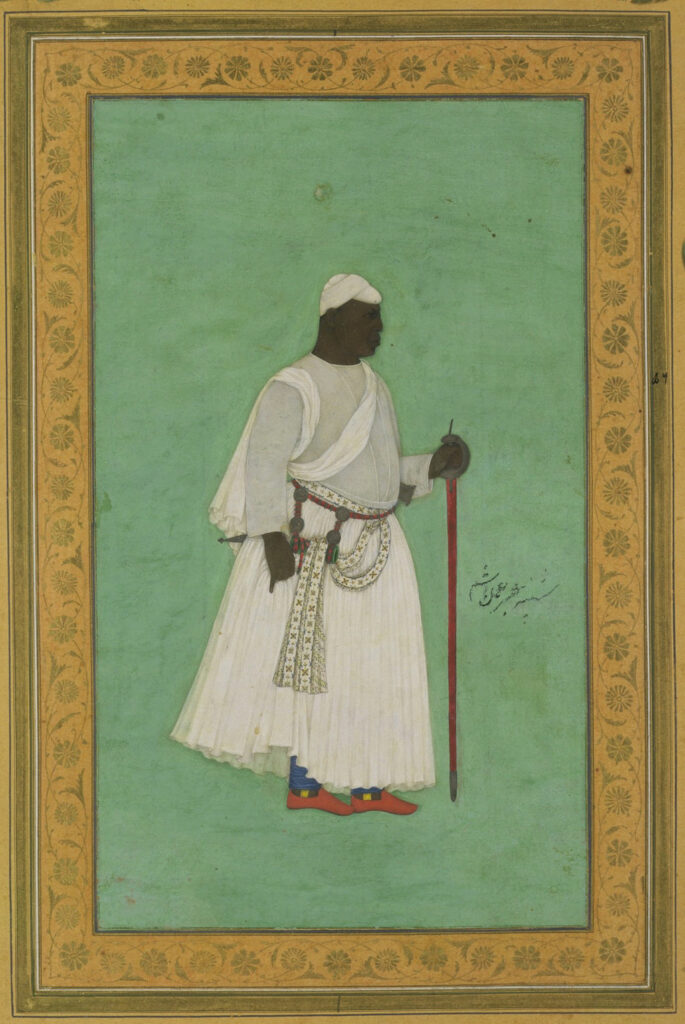
Malik Amber of Ahmadnager, by Hashim, c. 1624-25, Victoria and Albert Museum, Public domain, via Wikimedia Commons
A 17th-century record claims that Amber was born a free man but was sold for money by impoverished parents. Chappu, as he was named, was born in c. 1550 to farmers in the city of Harar (Ethiopia). After being passed from master to master in West Asia, Chappu arrived in Baghdad under the protection of Mir Qasim. By then, he had converted to Islam and went by the name Ambar. Qasim gave Ambar a formal education in Arabic and trained him to write in the manner of a munshi or secretary. In 1575, Qasim sold Ambar to another Habshi. Chengiz Khan was the peshwa of the Nizam Shahis of Ahmadnagar and shortly after this purchase, Ambar was freed and began to assert his dominance by recruiting an army.
In 1600 CE when the Mughals laid siege to Ahmadnagar, Malik Ambar moved to the western province and assumed the role of regent with an 18-month-old heir apparent recognised as Sultan. Between 1610 and 1621, Ambar’s army grew to 20,000 Habshi, Arab and Maratha warriors leading guerilla attacks on the Mughals occupying Ahmednagar territory. Mughal emperor Jahangir would commission works of art inspired by his fierce hatred of the Habshi general—watch the Sarmaya Talks with Dr Jonathan Gil Harris, below, to learn more about it.
Malik Ambar died in 1627, unconquered in battle. Dr Jonathan Gil Harris, author of The First Firangis: Remarkable Stories of Heroes, Healers, Charlatans, Courtesans, and Other Foreigners Who Became Indian, believes that Malik Ambar’s legacy in administrative acumen and guerilla warfare would influence Shivaji and his encounters with Aurangzeb. The Habshi general was also one of the early architects of the city of Kharki, aka Aurangabad.
Watch Dr Harris’s talk on Malik Ambar for Sarmaya
How did the Siddis shape culture?
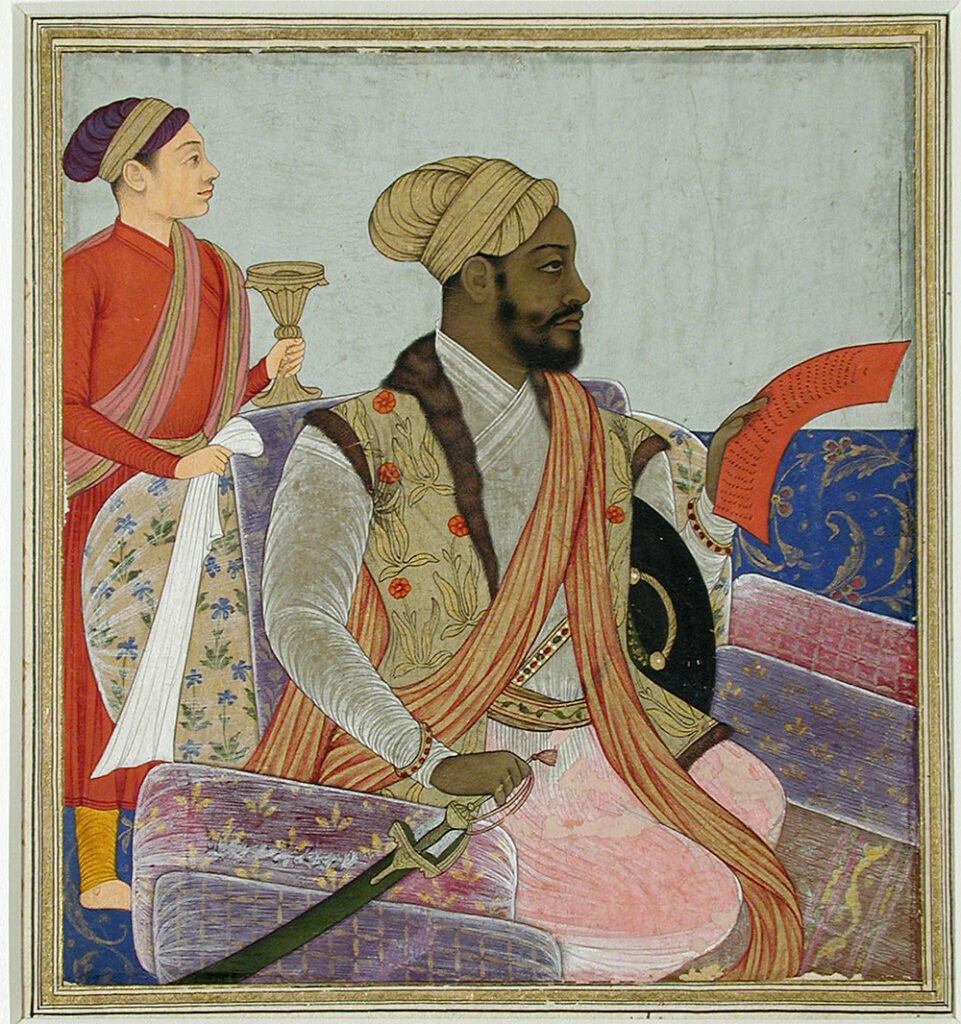
Ikhlas Khan with a Petition, c. 1650, attributed to Bijapur, San Diego Museum of Art, Public domain, via Wikimedia Commons
The kingdom of Bijapur would be witness to the rise of Siddi Raihan who grew up serving Ibrahim Adil Shah II (1580-1627) and later, his son, Muhammad. Under Muhammad’s reign, he was named the governor of a province on the border of Golconda in 1635 and honoured with the title of Ikhlas Khan. Under Ikhlas Khan, Bijapur expanded into the southern territories of Mysore and east Karnataka. His portrait in Deccani miniature painting is a sign of his cultural influence.
Many prominent members of the Siddi or Habshi community would patronise architecture and art. Siddi Masud, the governor of Karnool (Andhra Pradesh) serving under the last sultan of Bijapur, Sikandar Adil Shah (1672-1686) made considerable improvements to the famous Adoni fort, contributed to the building of the Jama Masjid and was a patron of the Kurnool school of painting. He also built the townships of Imtiyazgargh and Adilabad. Speaking of built legacies, Sidi Sayyed’s name remains alive in urban India thanks to his contribution to the historic skyline of Ahmedabad. The tree-of-life motif in the beautiful latticework windows of Sidi Sayyed Mosque (built in 1572CE) is recognised around the world; it’s the inspiration behind the logo of the Indian Institute of Management-Ahmedabad.
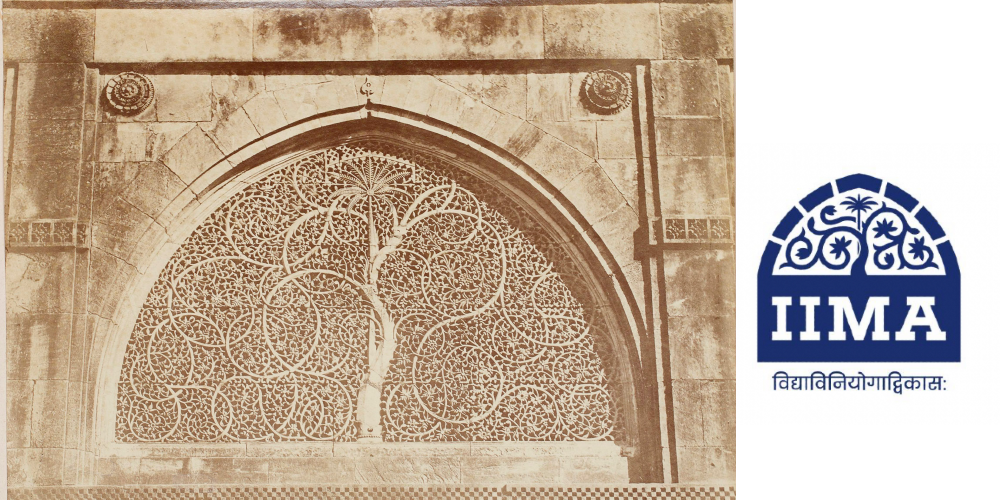
(left) Detail of a jali in Sidi Sayyid's Mosque, Ahmedabad ©️Sarmaya Arts Foundation; logo of IIM Ahmedabad
Who are the Siddis today?
Eventually the fading empires of the Deccan made way for a new kind of power: colonialism. In the 19th and 20th centuries, the prominence of the Siddis reduced considerably as the Portuguese began to trade in slaves, using them as daily labourers. They were treated inhumanly, much like their counterparts in America. To escape, families fled to the hills of Karnataka and southern Gujarat. During the British Raj, they remained in the status of labourers, with some exceptions. Like the Siddi Nawabs of Janjira (in Raigad, Maharashtra), which was recognised as a princely state by the Empire. By 1947, the status of the Siddis had once again changed as they became a minority community in independent India, dispersed across the hilly terrains of Gujarat, Maharashtra, Goa, Andhra Pradesh and Karnataka.
The Siddi community today is largely Muslim, with smaller sections being Hindu and Christian. Their primary source of income is farming. After a long and arduous struggle in recent times, their demand to be counted as one of the Scheduled Tribes has been met by the government. As a result of this, Siddis have now entered formal government education institutions and the government job market.
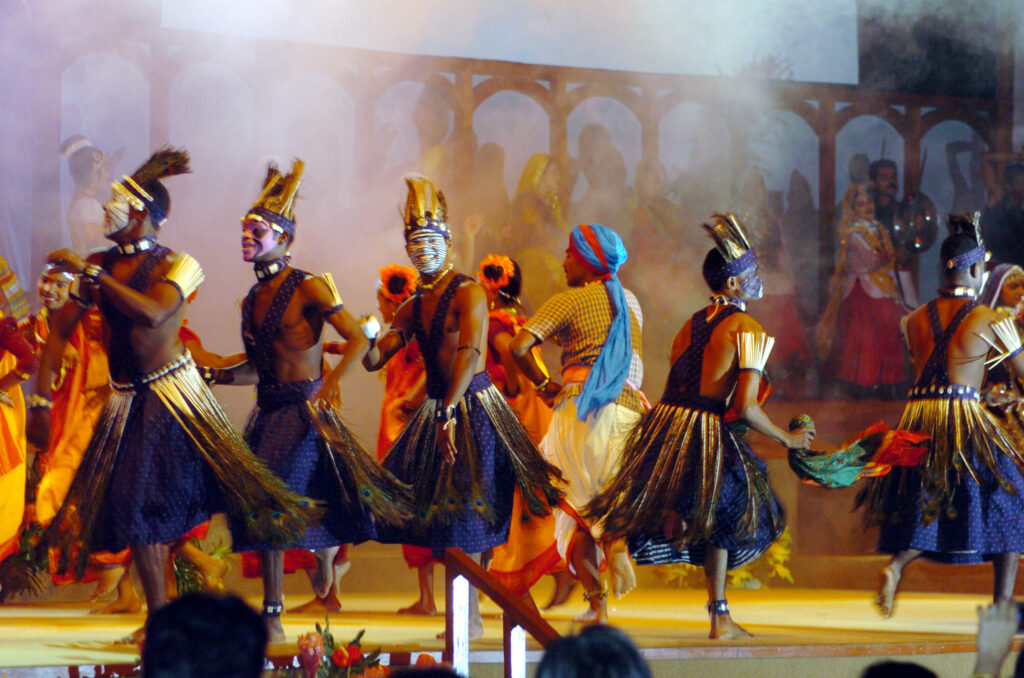
Siddi Dhamal artists of Gujarat, Wikipedia Commons
Even though Siddis belong to different regions and different religions, the community is bound by its shared history and traditions. Through music and dance, they preserve their identity as Afro-Indians. Performance arts like Goma or Dhamaal give us a glimpse into the unique transnational heritage of India’s Siddis.
Bibliography
- CZEKALSKA, Renata, and Agnieszka KUCZKIEWICZ-FRAŚ. “From Africans In India To African Indians.” Politeja, no. 42 (2016): 189–212.
- Mengesha, Astair Gebremariam. “The Habshis.” International Journal of Ethiopian Studies 1, no. 1 (2003): 91–102.
- Down to Earth (Irvine interview B Shroff), “Siddis: India’s forgotten Africans”, May 1, 2017
- Sarmaya Arts Foundation (Jonathan Gil Harris), “From Ethiopian Highlands to the Nehr-e-Ambari: How to build a transnational Deccan city”, Jan 4, 2018
- Shah AM, Tamang R, Moorjani P., et al. “Indian Siddis: African descendants with Indian admixture.” Am J Hum Genet. (2011) Jul 15;89(1):154-61. doi: 10.1016/j.ajhg.2011.05.030.
- Reddy, Sumanth, “Siddi and their sense of belonging in Karnataka, India”, Department of History & Government, Bowie State University, 2016, DOI:21690/foge/2016.64.1f


